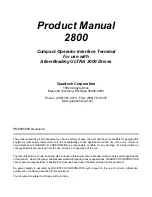
1. INTRODUCTION
Page 15
© 1995 - 2010 Fluke Corporation, DH Instruments Division
Table 9: Xe.
molbloc-S Flow in Xenon at Various molbloc Upstream Pressures
Xenon
Ratio = 0.460
Xe
molbloc-S MASS FLOW RATE (slm @ 0 °C) WHEN molbloc-S UPSTREAM PRESSURE IS:[1][2]
DESIGNATOR
K
F
[sccm/ kPa]
20 kPa
(3 psia)
50 kPa
(7 psia)
100 kPa
(15 psia)
Minimum
witout
vacuum
(3)
200 kPa
(30 psia)
500 kPa
(70 psia)
700 kPa
(100 psia)
1.2 MPa
(174 psia)
2 MPa
(290 psia)
1E1-S
10
0.1
0.2
0.4
0.8
0.7
1.8
3.2
n/a
[4]
n/a
[4]
2E1-S
20
0.1
0.4
0.7
1.4
1.5
3.6
6.4
n/a
[4]
n/a
[4]
5E1-S
50
0.4
0.9
1.8
3.6
3.6
9.1
16.1
n/a
[4]
n/a
[4]
1E2-S
100
0.7
1.8
3.6
6.5
7.3
18.2
32.2
n/a
[4]
n/a
[4]
2E2-S
200
1.5
3.6
7.3
12.9
14.6
36.4
64.5
n/a
[4]
n/a
[4]
5E2-S
500
3.6
9.1
18.2
29.7
36.4
91.0
161.2
n/a
[4]
n/a
[4]
1E3-S
1,000
7.3
18.2
36.4
59.3
72.8
182.0
322.3
n/a
[4]
n/a
[4]
2E3-S
2,000
14.6
36.4
72.8
109.6
145.6
364.0
644.6
n/a
[4]
n/a
[4]
5E3-S
5,000
36.4
91.0
182.0
267.2
364.0
910.0
1,611.5
n/a
[4]
n/a
[4]
1E4-S
10,000
72.8
182.0
364.0
529.2
728.0
1,819.9
3,223.1
n/a
[4]
n/a
[4]
[1] Flow values in table are valid only when critical flow is established.
[2] When volumetrically based mass flow units with reference temperatures other than 0°C are used, flow values
will generally be higher; the flow values for a given molbloc and upstream pressure are approximately 7%
higher when expressed in slm at 20°C. Flow values at a given pressure may vary by up to ± 2% due to
flowpath machining tolerances.
[3] Minimum upstream pressure to achieve critical flow with atmospheric pressure (approximately 100 kPa)
downstream of molbloc-S (no vacuum).
[4] Operation in this gas is limited to lower pressures due to the gas vapor pressure.
Table 10: C4H10.
molbloc-S Flow in Butane at Various molbloc Upstream Pressures
Butane
Ratio = 0.680
C4H10
molbloc-S MASS FLOW RATE (slm @ 0 °C) WHEN molbloc-S UPSTREAM PRESSURE IS:[1][2]
DESIGNATOR
K
F
[sccm/ kPa]
20 kPa
(3 psia)
50 kPa
(7 psia)
100 kPa
(15 psia)
Minimum
witout
vacuum
(3)
200 kPa
(30 psia)
500 kPa
(70 psia)
700 kPa
(100 psia)
1.2 MPa
(174 psia)
2 MPa
(290 psia)
1E1-S
10
0.1
0.3
0.7
1.0
1.4
n/a
[4]
n/a
[4]
n/a
[4]
n/a
[4]
2E1-S
20
0.3
0.7
1.4
1.9
2.7
n/a
[4]
n/a
[4]
n/a
[4]
n/a
[4]
5E1-S
50
0.7
1.7
3.4
4.8
6.8
n/a
[4]
n/a
[4]
n/a
[4]
n/a
[4]
1E2-S
100
1.4
3.4
6.8
9.0
13.6
n/a
[4]
n/a
[4]
n/a
[4]
n/a
[4]
2E2-S
200
2.7
6.8
13.6
18.0
27.2
n/a
[4]
n/a
[4]
n/a
[4]
n/a
[4]
5E2-S
500
6.8
17.0
34.0
42.2
68.0
n/a
[4]
n/a
[4]
n/a
[4]
n/a
[4]
1E3-S
1,000
13.6
34.0
68.0
84.4
136.0
n/a
[4]
n/a
[4]
n/a
[4]
n/a
[4]
2E3-S
2,000
27.2
68.0
136.0
157.0
272.0
n/a
[4]
n/a
[4]
n/a
[4]
n/a
[4]
5E3-S
5,000
68.0
170.0
340.0
392.4
679.9
n/a
[4]
n/a
[4]
n/a
[4]
n/a
[4]
1E4-S
10,000
136.0
340.0
679.9
784.9
1,359.8
n/a
[4]
n/a
[4]
n/a
[4]
n/a
[4]
[1] Flow values in table are valid only when critical flow is established.
[2] When volumetrically based mass flow units with reference temperatures other than 0°C are used, flow values
will generally be higher; the flow values for a given molbloc and upstream pressure are approximately 7%
higher when expressed in slm at 20°C. Flow values at a given pressure may vary by up to ± 2% due to
flowpath machining tolerances.
[3] Minimum upstream pressure to achieve critical flow with atmospheric pressure (approximately 100 kPa)
downstream of molbloc-S (no vacuum).
[4] Operation in this gas is limited to lower pressures due to the gas vapor pressure.
















































